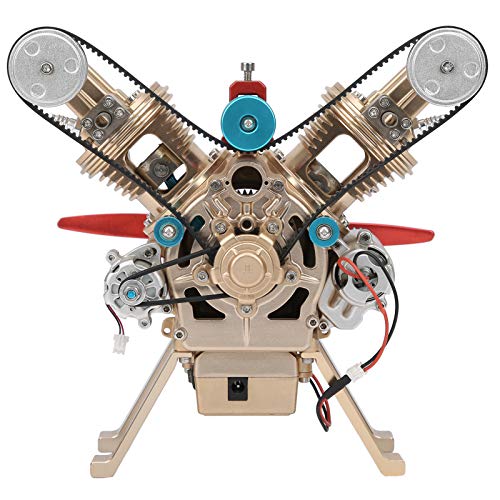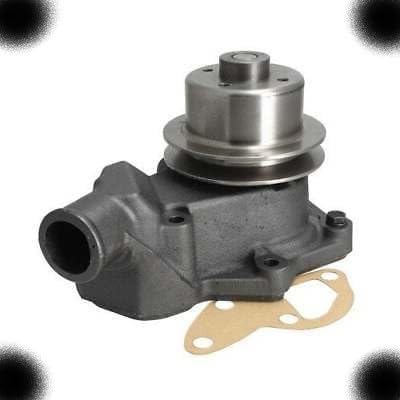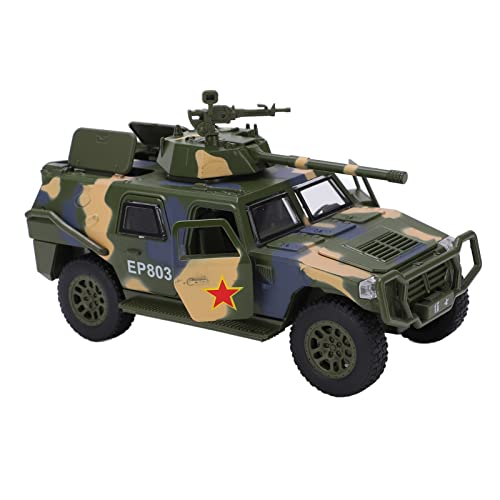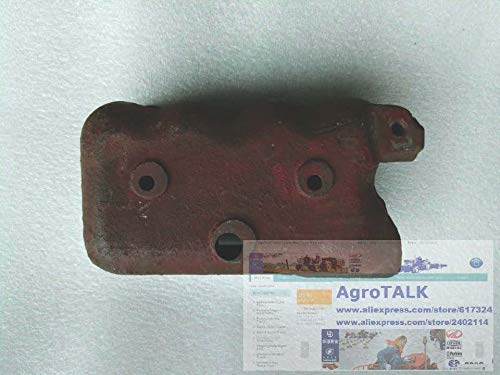Happy Thanksgiving. Enjoy family time.

You are using an out of date browser. It may not display this or other websites correctly.
You should upgrade or use an alternative browser.
You should upgrade or use an alternative browser.
Upshur's opposed twin engine
- Thread starter Brian Rupnow
- Start date

Help Support Home Model Engine Machinist Forum:
This site may earn a commission from merchant affiliate
links, including eBay, Amazon, and others.
I just received this email from R Klopp, who successfully built and ran six (not eight) of these Upshur opposed engines.
Hi Brian
I based my Upshur valve timing on the Wyvern design and came up with these numbers:
Wyvern timing (based on crank angle) is reportedly as follows:
Inlet: 230º duration, open 5º BTDC, close 225º ATDC, lobe centered at 110º
Exhaust: 255º duration, open 235º BTDC, close 20º ATDC, lobe centered at 107.5º BTDC
Offset between the lobes based on cam angle is therefore 108.75 º
Both valves are equally open 7.5º ATDC.
I machined the Upshur cams to these numbers, and I think the reality came pretty close to the numbers. I suppose the main thing for you is to set the angle between cam lobe peaks to 108.75° or thereabouts. You can then shift the cam-to-crank gear engagement tooth by tooth until you get the intake opening as close to 5° before TDC as you can.
This post has a decent explanation: https://www.model-engineer.co.uk/forums/topic/centaur-valve-timing/page/2/
Some old info here: https://www.homemodelenginemachinist.com/threads/upshur-twin-valve-timing.32825/
and here: https://www.modelenginemaker.com/index.php/topic,3793.msg68882.html#msg68882
Please consider copying this info to the main thread so the rest of the community can benefit.
Good luck!
Hi Brian
I based my Upshur valve timing on the Wyvern design and came up with these numbers:
Wyvern timing (based on crank angle) is reportedly as follows:
Inlet: 230º duration, open 5º BTDC, close 225º ATDC, lobe centered at 110º
Exhaust: 255º duration, open 235º BTDC, close 20º ATDC, lobe centered at 107.5º BTDC
Offset between the lobes based on cam angle is therefore 108.75 º
Both valves are equally open 7.5º ATDC.
I machined the Upshur cams to these numbers, and I think the reality came pretty close to the numbers. I suppose the main thing for you is to set the angle between cam lobe peaks to 108.75° or thereabouts. You can then shift the cam-to-crank gear engagement tooth by tooth until you get the intake opening as close to 5° before TDC as you can.
This post has a decent explanation: https://www.model-engineer.co.uk/forums/topic/centaur-valve-timing/page/2/
Some old info here: https://www.homemodelenginemachinist.com/threads/upshur-twin-valve-timing.32825/
and here: https://www.modelenginemaker.com/index.php/topic,3793.msg68882.html#msg68882
Please consider copying this info to the main thread so the rest of the community can benefit.
Good luck!
Last edited:
These numbers are not unusual for a faster running engine. The reason is that the air in the intake takes some time to accelerate and slow down, so by having an intake pipe of the right length one can arrange for air to keep flowing into the cylinder even after the piston has passed BDC. Even 60 degrees after BDC would be possible on a racing engine, however it would run poorly at lower speeds.That is when the exhaust pressure in the cylinder is still quite large and it will affect the intake stroke.
When you build an engine with a compression ratio of 4-1, 5-1 or 6-1 the entire cylinder volume is calculated and when you give it 45 degrees after BDC, what will be the remaining compression ratio of the engine !?
I usually tune the engine this way, maybe a little more but never 45 degrees after BDC
A similar idea applies with opening the intake early. If the exhaust pipe is the right length one can arrange for the escaping pulse of exhaust to produce a temporary vacuum at the exhaust valve at the end of the exhaust stroke. By opening the intake early, that vacuum can pull some mixture into the exhaust and thus flush exhaust gases from the cylinder. Of course this is bad for fuel consumption and pollution, but can allow a high performance engine to make more power.
These numbers are not unusual for a faster running engine. The reason is that the air in the intake takes some time to accelerate and slow down, so by having an intake pipe of the right length one can arrange for air to keep flowing into the cylinder even after the piston has passed BDC. Even 60 degrees after BDC would be possible on a racing engine, however it would run poorly at lower speeds.
A similar idea applies with opening the intake early. If the exhaust pipe is the right length one can arrange for the escaping pulse of exhaust to produce a temporary vacuum at the exhaust valve at the end of the exhaust stroke. By opening the intake early, that vacuum can pull some mixture into the exhaust and thus flush exhaust gases from the cylinder. Of course this is bad for fuel consumption and pollution, but can allow a high performance engine to make more power.
As @Jasonb said !!
And this is a model engine, it will never achieve what is in the full size engine, so don't compare.Forget all the thoughts and theories based on full size engines. It is just down to how the models are built and assembled and having an understanding of their timing.
Yep also same 4-5 degrees from Rklopp before TDC that I suggested but you still want to set it at your usual 15deg, Don't now why I bother some times.
Maybe now that a second person has suggested it you will get your head out the sand and listen.
Rklopp did you machine your cams to the Upshur profile or alter them to get the longer Wyvern duration eg two different cam profiles?
Maybe now that a second person has suggested it you will get your head out the sand and listen.
Rklopp did you machine your cams to the Upshur profile or alter them to get the longer Wyvern duration eg two different cam profiles?

$99.99
AHS Outdoor Wood Boiler Yearly Maintenance Kit with Water Treatment - ProTech 300 & Test Kit
Alternative Heating & Supplies

$45.99
Sunnytech Mini Hot Air Stirling Engine Motor Model Educational Toy Kits Electricity HA001
stirlingtechonline

$426.53
DM14 Engine Build Kit, Metal Engine Build Model Great Metal Material for Engineer for Factory
Easoger Official

$94.99
$109.99
AHS Woodmaster 4400 Maintenance Kit for Outdoor Wood Boiler Treatment
Alternative Heating & Supplies

$188.98
TM NEXDYNAMI RE41157 Water Pump Compatible With/Replacement For/John Deere 6200 7400 6300 6600 6500 6400 7220 7600 7200 RE41157
VIVID MARKET CORPORATION

$443.98
TM NEXDYNAMI AT29618 Water Pump Compatible With/Replacement For John Deere 1020 1520 2020 300 301 400 401 440 440A 480 AT29618
VIVID MARKET CORPORATION

$160.35 ($1.43 / oz)
Replacement Combustion Chamber Kit, Burnham V8 and V8H, 1-6 Sec, 108136-01, 1129
Plumbing Planet

$649.00
$699.00
FoxAlien Masuter Pro CNC Router Machine, Upgraded 3-Axis Engraving All-Metal Milling Machine for Wood Acrylic MDF Nylon Carving Cutting
FoxAlien Official

$109.99
AmTech300 - Boiler Treatment Professional Strength (Rust Inhibitor For Outdoor Wood Boilers)
Alternative Heating & Supplies

$39.99
$49.99
Sunnytech Low Temperature Stirling Engine Motor Steam Heat Education Model Toy Kit For mechanical skills (LT001)
stirlingtechonline

$40.02
$49.99
Becker CAD 12 3D - professional CAD software for 2D + 3D design and modelling - for 3 PCs - 100% compatible with AutoCAD
momox Shop
The same rules do apply to models as well. But the scaling means that a fast running "racing" model engine might run at 20,000 rpm or more, much too fast for our taste.As @Jasonb said !!
And this is a model engine, it will never achieve what is in the full size engine, so don't compare.
I won't argue, I always tune the engine model the way it will run and it runs - that's all I need !
Alright--I'm convinced. I will set up for the intake cam to begin lifting the tappet at 5 degrees before the piston reaches top dead center. Not much got done yesterday because it was Thanksgiving feast day at my house.
rklopp
Well-Known Member
- Joined
- Oct 6, 2008
- Messages
- 393
- Reaction score
- 109
I made the cams to the Wyvern plans. The intake and exhaust have different profiles due to the different durations.Rklopp did you machine your cams to the Upshur profile or alter them to get the longer Wyvern duration eg two different cam profiles?
- Joined
- Jun 24, 2010
- Messages
- 2,445
- Reaction score
- 968
As Jason says, tappets/followers can have a pronounced effect on both timing duration & valve lift profile on the exact same cam. The theoretical duration usually assumes a tangency follower relationship. But if you have constructed something different, all bets off.


rklopp
Well-Known Member
- Joined
- Oct 6, 2008
- Messages
- 393
- Reaction score
- 109
All parts of my cam profiles are circle segments. There are no flats. The nose is one circle, the base is another, and each flank is a circle. They all have different centers. The two flanks have the same radii and the profiles are symmetric. All circles are tangent. The lift is a continuous function with continuous slope, the velocity is piecewise with discontinuous slope at each circle tangency, and the acceleration is discontinuous. The tappets are wide enough so that the contact is always on the flat face and the edge does not "dig into" the side of flanks.
The Wyvern cams are designed for use with roller followers. Not the flat faced tappets we have here.
The Wyvern cam angles quoted above of 230° and 255° are too 'fat' for use with flat lifters on anything but a racing engine.
To emulate the Wyvern valve timing, the lifters should be domed to the same radius as the Wyvern rollers.
As it is at the moment, just as the forces are at a maximum, the cam flank will be scraping on the edge of the lifter.
And worse than that, the kinematics of a flat lifter combined with a flat cam flank result in infinite acceleration.
In practice this impossibility is accommodated by the elasticity of the components, but it is still thoroughly bad design.
The Wyvern cam angles quoted above of 230° and 255° are too 'fat' for use with flat lifters on anything but a racing engine.
To emulate the Wyvern valve timing, the lifters should be domed to the same radius as the Wyvern rollers.
As it is at the moment, just as the forces are at a maximum, the cam flank will be scraping on the edge of the lifter.
And worse than that, the kinematics of a flat lifter combined with a flat cam flank result in infinite acceleration.
In practice this impossibility is accommodated by the elasticity of the components, but it is still thoroughly bad design.
All parts of my cam profiles are circle segments. There are no flats. The nose is one circle, the base is another, and each flank is a circle. They all have different centers. The two flanks have the same radii and the profiles are symmetric. All circles are tangent. The lift is a continuous function with continuous slope, the velocity is piecewise with discontinuous slope at each circle tangency, and the acceleration is discontinuous. The tappets are wide enough so that the contact is always on the flat face and the edge does not "dig into" the side of flanks.
Sounds good, but how do you design in the clearance?
After thinking about cam timing all day, I finally went back to the posts I made about about cam timing back when I first designed and built my opposed cylinder twin engine from about 5 years ago. Surprise!!!---the 102 degrees cam lobe separation was there on a drawing ---the same number given for cam lobe separation given on the drawings of the twin opposed engine designed by Upshur. However, on my drawing from 5 years ago, that 102 degrees cam lobe separation was between the lobe on the intake cam and the lobe on the exhaust cam. The current engine is a different kettle of fish, because while one cam opens the intake valve, the other cam is the one that closes it. I'm beginning to see what is going on here with valve timing. The 102 degrees given on drawings of my current engine is the cam lobe separation on two different cams. This engine is very strange because it has four valves but only two long cams to operate them. I haven't seen this before.
rklopp
Well-Known Member
- Joined
- Oct 6, 2008
- Messages
- 393
- Reaction score
- 109
I copied the Wyvern timing, not the cam profiles. Thus, I took account of the difference between roller and flat tappets.The Wyvern cams are designed for use with roller followers. Not the flat faced tappets we have here.
The Wyvern cam angles quoted above of 230° and 255° are too 'fat' for use with flat lifters on anything but a racing engine.
To emulate the Wyvern valve timing, the lifters should be domed to the same radius as the Wyvern rollers.
As it is at the moment, just as the forces are at a maximum, the cam flank will be scraping on the edge of the lifter.
And worse than that, the kinematics of a flat lifter combined with a flat cam flank result in infinite acceleration.
In practice this impossibility is accommodated by the elasticity of the components, but it is still thoroughly bad design.
The current engine is a different kettle of fish, because while one cam opens the intake valve, the other cam is the one that closes it.
You really are getting confused how can one cam open a valve and the other close it when the cam follower and pushrod to each valve only contacts one cam.
I mentioned somewhere in this thread that the other opposed twin had almost the same angles when you were saying 102 was unusual. read what I wrote here
https://www.homemodelenginemachinist.com/threads/upshurs-opposed-twin-engine.36037/post-414231
The only reason the other opposed twin had 4 cams and not two was due to cam follower and pushrod layout. Hoglet shares a cam for two of it's central rods so not so unusual
ONE MORE TIME TREAT IT AS A SINGLE AND TIME ONE CYLINDER. THE OTHER WILL TAKE CARE OF ITSELF.
At the risk of wasting my time I will suggest you take the cover off the top of your older opposed twin an look at the cam positions.
This was my version

You will see that the two inlet valves line up with each other and the two exhaust valves line up with each other.
This is not any different to how Upshur has it except his angled pushrods mean that what are 4 cams on the bobcat become two cams on his engine
If your CAD allows you to set gear ratios and directions then just assemble these few parts and turn the crankshaft round and watch what the cams do.
This was my version

You will see that the two inlet valves line up with each other and the two exhaust valves line up with each other.
This is not any different to how Upshur has it except his angled pushrods mean that what are 4 cams on the bobcat become two cams on his engine
If your CAD allows you to set gear ratios and directions then just assemble these few parts and turn the crankshaft round and watch what the cams do.
I copied the Wyvern timing, not the cam profiles. Thus, I took account of the difference between roller and flat tappets.
rklopp, you clearly know what you are talking about.
My comments in post #374 were related to Brian's job, but I was not thinking properly anyway. Old fool in a hurry.
While I stand by what I said about the lifter design, my comments on the cam angles are drivel. I should have realised the quoted angles of 230° and 255° refered to crank rotation and could not possibly have been the cam angles I was mistaking them as. The actual cam angles of 115° and 127.5° are in fact perfectly reasonable for either flat or roller followers in a fairly slow running engine.
Similar threads
- Replies
- 413
- Views
- 59K
- Replies
- 25
- Views
- 6K
- Replies
- 27
- Views
- 4K
- Replies
- 61
- Views
- 13K
























































